Tolkien (Geek Gab Fest): Orcs, in Tolkien’s works, are an inherently evil race of raiders, murderers, cannibals, and rapists. They are utterly evil, without any redeeming qualities except a low sort of loyalty to their masters.
Conan (Sprague de Camp Fan): There are several things I regret in life.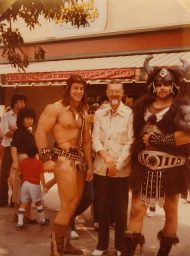 Mostly small things. Things like never having the experience of attending this show. Starting in 1983, Universal Studios Hollywood had an attraction called The Adventures of Conan: A Sword and Sorcery Spectacular. It was an 18-minute stage show loosely based on the Conan the Barbarian and Red Sonja movies.
Mostly small things. Things like never having the experience of attending this show. Starting in 1983, Universal Studios Hollywood had an attraction called The Adventures of Conan: A Sword and Sorcery Spectacular. It was an 18-minute stage show loosely based on the Conan the Barbarian and Red Sonja movies.
Warhammer (Jon del Arroz): Warhammer 40K is ruined and gamers are pulling out of Games Workshop after the female custodes debacle now is getting a doubling down in the Tithes animated series.
Authors (Fandom Pulse): Yesterday, fans and friends were hit with a myriad of tragic news in the fantasy books world, from Baen author Howard Andrew Jones to independent author Lori Janeski and fantasy writer and teacher Holly Lisle.
Comic Books (DMR Books): Joe Jusko turned sixty-five the other day. While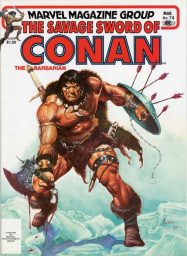 I have done a post on his Edgar Rice Burroughs-inspired artwork, I’ve never done a blog entry on Jusko’s covers for Marvel’s The Savage Sword of Conan, which is where I first became aware of him and his work.
I have done a post on his Edgar Rice Burroughs-inspired artwork, I’ve never done a blog entry on Jusko’s covers for Marvel’s The Savage Sword of Conan, which is where I first became aware of him and his work.
Fantasy (Black Gate): At about the halfway mark in Howard Andrew Jones’s Lord of a Shattered Land, the excellent opening volume of The Chronicles of Hanuvar, the author shifts gears. “Against the run of play,” he opts for comedy. Lord of a Shattered Land is set up in episodic form, such that each of the chapters can be read independently.
Comic Books (Dark Worlds Quarterly): I guess I shouldn’t be surprised, but I always let out a girlish cry of delight when I stumble on another Sword & Sorcery (or close) gem hiding in the long boxes. Here is a dozen to consider. DC, Marvel, Pacific, Archie and Western, they all keep providing me new heroic fantasy tales. Usually in five-six page lengths. The 1970s were great for comic companies trying to figure out how to do S&S. By the 1980s, and many issues of Conan the Barbarian later, they seem to have it down
Art (Goodman Games): And then you have Philippe Druillet, an artist whose work was unmoored from any visual language before or since. French by birth, Druilllet had always been a genre fan and began his career with an adaptation of Michael Moorcock’s seminal Elric of Melnibone, which he later re-tooled as the story of Yragaël, doomed and traitorous prince of Cymmorak.
work was unmoored from any visual language before or since. French by birth, Druilllet had always been a genre fan and began his career with an adaptation of Michael Moorcock’s seminal Elric of Melnibone, which he later re-tooled as the story of Yragaël, doomed and traitorous prince of Cymmorak.
 Pulp (Universo di scienciaficcion): Over time, Munsey made several changes to the magazine in the hope to expand its audience. In December 1888, he changed the title to “The Argosy. Possibly, the first fiction published on its pages was a history of Andre Laurie entitled “The Conquest of the Moon,” serialized in 1889. In April 1894, The Argosy, it became monthly cadence. In October From 1896, Munsey withdrew the articles and The Argosy became the first History magazine dedicated exclusively to publishing fictional stories.
Pulp (Universo di scienciaficcion): Over time, Munsey made several changes to the magazine in the hope to expand its audience. In December 1888, he changed the title to “The Argosy. Possibly, the first fiction published on its pages was a history of Andre Laurie entitled “The Conquest of the Moon,” serialized in 1889. In April 1894, The Argosy, it became monthly cadence. In October From 1896, Munsey withdrew the articles and The Argosy became the first History magazine dedicated exclusively to publishing fictional stories.
Cinema (Hyborian Reviews): No I’ve not gotten mad or insane, or perhaps I’ve been mad and insane all from the beginning. I know this is an extremely unpopular opinion and it may surprise you but I’m probably the only person in the world who dosen’t dislike the 2011 Conan the Barbarian movie.
Robert E. Howard (Black Gate): Some of the finest gifts are from your buddy, a kindred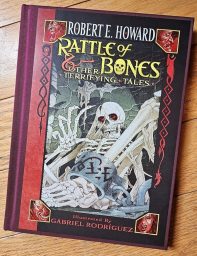 spirit and dog brother in REH fandom, such as that damnable reprobate, Levi Combs. At Gamehole Con this year, Levi gifted me with this beautiful copy of Rattle of Bones and Other Terrifying Tales, by Robert E. Howard. And what a treasure it is!
spirit and dog brother in REH fandom, such as that damnable reprobate, Levi Combs. At Gamehole Con this year, Levi gifted me with this beautiful copy of Rattle of Bones and Other Terrifying Tales, by Robert E. Howard. And what a treasure it is!
Science Fiction (Interesting Literature): What happens if you cross the Martian adventures of Edgar Rice Burroughs with the pulp fantasy of Robert E. Howard? You get the planetary fantasies of Leigh Brackett, the underrated writer of ‘science fantasy’ who penned a number of hugely entertaining short stories and novellas set on Venus and Mars. Leigh Brackett hasn’t quite been forgotten, at least by those (including the fantasy and SF author Michael Moorcock) who have championed her work.
Cinema (Dark Worlds Quarterly): Ray Harryhausen did more for Sword & Sorcery than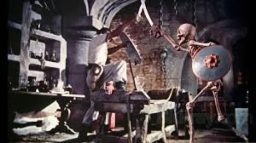 anyone after Robert E. Howard. Ray gave us a cinematic glimpse into what Fantasy could look like. His Greek and Arabian adventures featured many of mythology’s greatest inventions, all set to life with Dynamation. His influence can be seen in young writers like Lin Carter in the 1960s and in the first role-playing games like Advanced Dungeons & Dragons.
anyone after Robert E. Howard. Ray gave us a cinematic glimpse into what Fantasy could look like. His Greek and Arabian adventures featured many of mythology’s greatest inventions, all set to life with Dynamation. His influence can be seen in young writers like Lin Carter in the 1960s and in the first role-playing games like Advanced Dungeons & Dragons.
Tolkien (Tolkien and Fantasy): In The Letters of J.R.R. Tolkien (1981), there is about eight pages worth of text comprising “Drafts for a letter to ‘Mr Rang'” (Letter no. 297, pp. 379-387). I never knew there was any mystery about the identity of Mr. Rang until my friend Jessica Yates just sent me a draft of her short piece on this topic (now published here). My research of some ten years ago identified a different person. With Jessica’s permission, I present my findings here.
Pulp (Amazing Stories): In the mid to late 1930s the current site of the Hilton Garden Inn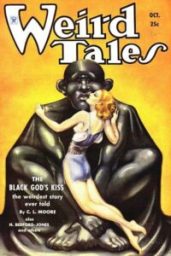 in Indianapolis Indiana was known as The Fletcher Trust Building. A stenographer and secretary who worked for the company was a young woman by the name of Catherine Lucille Moore. After two years of study at Indiana University during the Great Depression, she had to leave and return to work at Fletcher Trust.
in Indianapolis Indiana was known as The Fletcher Trust Building. A stenographer and secretary who worked for the company was a young woman by the name of Catherine Lucille Moore. After two years of study at Indiana University during the Great Depression, she had to leave and return to work at Fletcher Trust.
Arthur (Ken Lizzi): I doubt I could recall the sheer number — let alone the titles — of all the books, comics, short stories, films, and television shows I have consumed based upon the tales of King Arthur. Clearly the stuff resonates with creators, or there wouldn’t be so much of it. And equally clearly it resonates with me. In an antique store I picked up a volume (copyright 1903) of selections from Alfred Lord Tennyson’s Idylls of the King.
Pulp (Rough Edges): “The Devil’s Ray” is a novelette by Donald E. Keyhoe that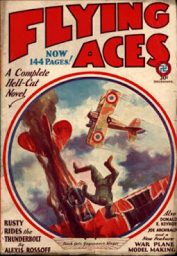 appeared in the December 1931 issue of the iconic aviation pulp FLYING ACES. Those heroes I mentioned are Dusty Rhoades, a huge Chief Petty Officer who’s also an ace pilot despite appearing too big to fit in a plane’s cockpit.
appeared in the December 1931 issue of the iconic aviation pulp FLYING ACES. Those heroes I mentioned are Dusty Rhoades, a huge Chief Petty Officer who’s also an ace pilot despite appearing too big to fit in a plane’s cockpit.
Tolkien (Notion Club Papers): It is an interesting question why JRR Tolkien did not finish and publish The Silmarillion; despite that The Lord of the Rings was published in late 1955 and Tolkien did not die until mid-1973; and despite that all through these seventeen-plus years he was insistent that making The Silmarillion publishable was his number one priority.
Cinema (Black Gate): It’s hard to remember now, but a mere quarter-century ago, the pirate movie genre was dead and over, ninety years of cheesy swashbuckling and occasional scalawag glory doomed to the ash-heap of history. And then, grinning with malice, pirate films rose like drowned zombies and shambled back to the screen, more raffish and rakehelly than ever. And who do we have to thank for this unforeseen and unholy resurrection?
pirate movie genre was dead and over, ninety years of cheesy swashbuckling and occasional scalawag glory doomed to the ash-heap of history. And then, grinning with malice, pirate films rose like drowned zombies and shambled back to the screen, more raffish and rakehelly than ever. And who do we have to thank for this unforeseen and unholy resurrection?
Appendix N (Ethan Sabatella): Appendix N is the list of inspirational reading supplied at the end of the Advanced Dungeons & Dragons’ Dungeon Master’s Guide (published in 1979), which catalogues the recommended reading for DMs to draw upon when designing their campaigns. These include stories and authors that are household names among fantasy and science fiction fans, including Tolkien, Robert E. Howard, and Michael Moorcock. Old school D&D wears the inspiration of many of these authors and titles on its sleeve via its mechanics, races, artifacts, and general tone.
Fiction (Vintage Pop Fictions): The Sulu Sea Murders was the seventh of F. Van Wyck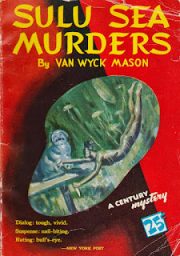 Mason’s thirty-one Hugh North spy thrillers. It was published in 1933. While these novels are usually considered to be spy fiction it should be pointed out that many of the early books in this series are as much murder mysteries as spy thrillers, and quite a few are in fact pure murder mysteries. Such is the case with The Sulu Sea Murders. It’s a murder mystery but the exotic setting adds interest.
Mason’s thirty-one Hugh North spy thrillers. It was published in 1933. While these novels are usually considered to be spy fiction it should be pointed out that many of the early books in this series are as much murder mysteries as spy thrillers, and quite a few are in fact pure murder mysteries. Such is the case with The Sulu Sea Murders. It’s a murder mystery but the exotic setting adds interest.
Weird Fiction (Egregoric Times): It is commonplace that creators of horror fantasy often turn to their nightmares for source material, or to the “hypnogogic state”, that period just before drifting off to sleep when ideas unravel from the constraints of reality and daytime concerns and begin to flow towards phantasmagoria and dream.
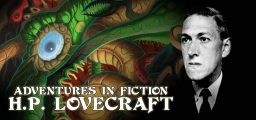 H. P. Lovecraft (Goodman Games): H. P. Lovecraft was born in his family home in Providence, Rhode Island. Lovecraft was an only child with few childhood friends. He lived a solitary life with his mother. His connection to the world was through books, pulp magazines, and the numerous correspondences he wrote to the authors and editors of those magazines. Lovecraft is recognized as one of the greatest letter writers of the twentieth century, and some of his regular correspondents were Robert Bloch, Robert E. Howard, and Clark Ashton Smith.
H. P. Lovecraft (Goodman Games): H. P. Lovecraft was born in his family home in Providence, Rhode Island. Lovecraft was an only child with few childhood friends. He lived a solitary life with his mother. His connection to the world was through books, pulp magazines, and the numerous correspondences he wrote to the authors and editors of those magazines. Lovecraft is recognized as one of the greatest letter writers of the twentieth century, and some of his regular correspondents were Robert Bloch, Robert E. Howard, and Clark Ashton Smith.
Chesterton (SFF Remembrance): You don’t have to be Catholic, or even Christian (as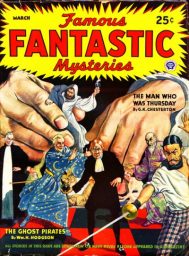 indeed I’m not), to enjoy Chesterton’s writing, since he tended to be very funny, and had kind of an Oscar Wilde-esque penchant for zingers. He’s a much finer prose stylist than H. G. Wells, his close contemporary, friend, and in some ways his foil. He also wrote his fair share of fantasy, including what is perhaps his single most famous work, The Man Who Was Thursday: A Nightmare, one of the great novels of the 20th century.
indeed I’m not), to enjoy Chesterton’s writing, since he tended to be very funny, and had kind of an Oscar Wilde-esque penchant for zingers. He’s a much finer prose stylist than H. G. Wells, his close contemporary, friend, and in some ways his foil. He also wrote his fair share of fantasy, including what is perhaps his single most famous work, The Man Who Was Thursday: A Nightmare, one of the great novels of the 20th century.
James Bond (SLJ Productions): When you have some kind of a hero like James Bond, you need some kind of companion to help him out. Here’s my ranking of all the principal Bond Women in all the films, including the unofficial ones. I won’t be counting secondary characters like Paris Carver or Sylvia Trench, as they deserve their own list sometime down the line. Feel free to disagree with any of my choices, but please do so respectfully.
Crime Fiction (Comics Radio): Craig Rice’s real name was Georgiana Ann Randolph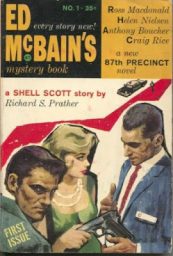 Walker Craig. When she began publishing prose fiction in 1939 (after working as a writer in radio), she began using the pen name. Her stuff is wonderful–a witty combination of hard-boiled detective stories and screwball comedy. Her most successful character was alcoholic lawyer John J. Malone, who acting more like a P.I. than a lawyer, only took cases with the upmost reluctance, and solved them without ever bothering to sober up.
Walker Craig. When she began publishing prose fiction in 1939 (after working as a writer in radio), she began using the pen name. Her stuff is wonderful–a witty combination of hard-boiled detective stories and screwball comedy. Her most successful character was alcoholic lawyer John J. Malone, who acting more like a P.I. than a lawyer, only took cases with the upmost reluctance, and solved them without ever bothering to sober up.
History (Isegoria): The United States has more port potential than the rest of the world combined, Peter Zeihan explains (in The Accidental Superpower): The coast of Africa, for example, may be sixteen thousand miles long.
Robert E. Howard (Black Gate): Kirby O’Donnell was a similar character to El Borak, and he saw print first, with “Swords of Shahrazar in the October, 1934 issue of Top-Notch Magazine. I talked about that publication in my prior essay. Curiously, “Swords” was actually a direct sequel to “Gold from Tartary,” which appeared after “Swords,” in the January, 1935 issue of Thrilling Adventures.
History (Frontier Partisans): The great killing that took place on July 3, 1778
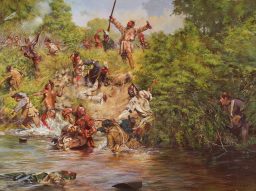 in the Wyoming Valley of Pennsylvania, in the midst of the American Revolution has come down in history as the Wyoming Massacre. A force of British Rangers and Iroquois warriors invaded the Valley, lured a force of American Patriot militia into battle — and routed them. Then came the slaughter.
in the Wyoming Valley of Pennsylvania, in the midst of the American Revolution has come down in history as the Wyoming Massacre. A force of British Rangers and Iroquois warriors invaded the Valley, lured a force of American Patriot militia into battle — and routed them. Then came the slaughter.
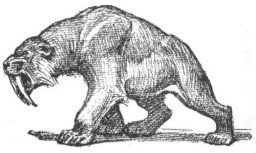 Prehistoric (Dark Worlds Quarterly): The straight caveman tale was a popular genre, largely in novel form, from 1865 and on, especially in France. This tradition of adventures of cave folk found its way into the magazines of the 1890s through H. G. Wells but became something of a story type right into the Pulps. Robert E. Howard’s “Spear and Fang” (Weird Tales, July 1925)and C. M. Eddy’s “With Weapons of Stone” (Weird Tales, December 1924) and “Arhl of the Caves” (Weird Tales, January 1925) see the end of this trend.
Prehistoric (Dark Worlds Quarterly): The straight caveman tale was a popular genre, largely in novel form, from 1865 and on, especially in France. This tradition of adventures of cave folk found its way into the magazines of the 1890s through H. G. Wells but became something of a story type right into the Pulps. Robert E. Howard’s “Spear and Fang” (Weird Tales, July 1925)and C. M. Eddy’s “With Weapons of Stone” (Weird Tales, December 1924) and “Arhl of the Caves” (Weird Tales, January 1925) see the end of this trend.
New (Rough Edges): CALIFORNIA POWDERSMOKE is the latest action-packed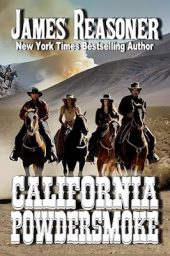 Western from legendary author James Reasoner. Guns will blaze and not everyone will make it out of the desert alive in this fast-paced adventure yarn that’s sure to please readers of traditional Westerns. See why James Reasoner has been entertaining readers for almost 50 years!
Western from legendary author James Reasoner. Guns will blaze and not everyone will make it out of the desert alive in this fast-paced adventure yarn that’s sure to please readers of traditional Westerns. See why James Reasoner has been entertaining readers for almost 50 years!
Science Fiction (City Journal): Remembrance of Earth’s Past divides the history of humanity into two halves: before and after first contact with an intelligent alien civilization. It tells a fictionalized history of that second half, from the moment of first contact until 17 billion years after the beginning of time.
Fiction (Mewsings): Jean Morris’s YA novel The Troy Game (1987), set in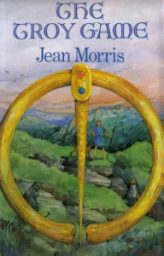 Dark Ages Britain, starts with Brannock, second son of the King of the Seven Kingdoms, being sent on a mission by the druid-like Elder, Mennor. There are rumours of invaders coming from the east, and Mennor needs a message taken to his Order at Caerdroia.
Dark Ages Britain, starts with Brannock, second son of the King of the Seven Kingdoms, being sent on a mission by the druid-like Elder, Mennor. There are rumours of invaders coming from the east, and Mennor needs a message taken to his Order at Caerdroia.
History (Paul Whitewick): The First King of WESSEX – We Found him!!
Please give us your valuable comment